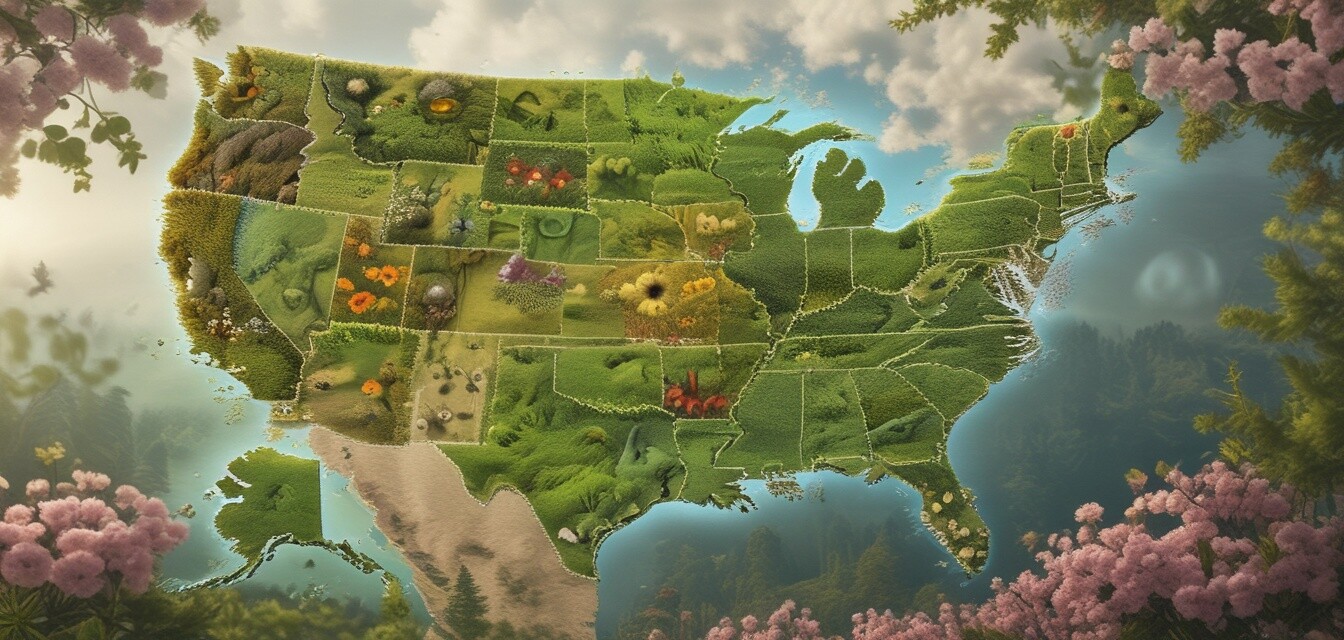
Regional Allergy Patterns: What to Expect in 2025
Key Takeaways
- Allergy patterns will vary significantly across regions in 2025.
- Climate change is influencing pollen levels and seasons for different plants.
- Understanding local pollen forecasts can help seasonal allergy sufferers prepare.
- New findings indicate that urban areas may experience increased allergy incidences.
- It's important to adjust home and lifestyle practices based on regional trends.
As we approach 2025, understanding how regional differences affect allergy patterns is crucial for many individuals who suffer from seasonal allergies. Climate data and expert opinions lead to comprehensive insights into pollen levels and the types of allergens that are prevalent in various areas. This article explores what we can expect in the realm of seasonal allergies across different regions in 2025.
Current Understanding of Allergy Patterns
Allergy patterns don't occur in isolation; they depend on multiple factors including climate, geography, and plant life. As allergy sufferers know all too well, pollen levels can swing dramatically based on several key elements. Let's delve deeper into these factors and their implications for 2025.
Factors Influencing Allergy Patterns
- Local Flora: Different plants release their pollen at different times. The flora native to a region will heavily influence local allergy patterns.
- Climate Change: Changes in temperature and precipitation patterns can extend pollen seasons and increase pollen production.
- Urbanization: Urban areas tend to have higher pollen levels due to increased vegetation in metropolitan settings.
- Geographical Features: Mountains, rivers, and oceans can affect wind patterns and pollen distribution.
Regional Allergy Predictions for 2025
Let us take a closer look at specific regions and their anticipated allergy trends in 2025.
| Region | Predicted Pollen Types | Pollen Season Duration |
|---|---|---|
| Northeast | Tree pollen (Maple, Oak) | March - June |
| Southeast | Grass pollen (Bermudagrass) | April - September |
| Midwest | Ragweed and Grass | August - October |
| West Coast | Tree pollen (Pine) | February - April |
| Southwest | Weeds (Sagebrush, Pigweed) | September - November |
Impact of Climate Change on Seasonal Allergies
As we anticipate the future of allergy patterns, one cannot ignore the significant impact of climate change. The Earth’s changing climate creates an environment where certain plants thrive longer, leading to extended pollen seasons and increased allergen exposure.
What Scientists Are Saying
Experts have observed a trend of lengthening pollen seasons. A review of the extensive climate data indicates that in 2025, allergy sufferers may notice:
- Increased rates of pollen production due to warmer temperatures.
- More intense pollen seasons in areas previously considered mild.
- Greater geographic spread of certain invasive pollen-producing plants.
Urban Areas: A Growing Concern
Research suggests that urban settings are prone to more severe allergy outbreaks. The interaction of increased pollution, urban heat, and green spaces can exacerbate allergy symptoms. Hence, those residing in cities should remain vigilant.
Pros
- Awareness of local allergy patterns can help people prepare.
- Access to advanced allergy medications and treatments in urban areas.
- Improved allergy forecasting technologies.
Cons
- Greater exposure to allergens in densely populated areas.
- Potential for prolonged allergy seasons due to climate changes.
- Increased competition among plants for space leading to more allergenic species.
Adapting to Changing Allergy Trends
As we move toward 2025, it's essential to adapt our lifestyles and homes to reduce the impact of seasonal allergies. Below are several strategies to consider:
Tips for Managing Seasonal Allergies
- Stay updated on local pollen forecasts and minimize outdoor activities on high pollen days.
- Invest in air purifiers to reduce indoor allergens.
- Consider using allergy-proof bedding to decrease nighttime symptoms.
- Implement nasal care products for effective relief.
- Consult with healthcare providers for personalized allergy medication. Explore options in our allergy medications guide.
Conclusion
In conclusion, the landscape of seasonal allergies is set to evolve significantly by 2025. With regional variations influenced by climate change and urbanization, understanding these patterns will be vital for all individuals affected by allergies. By implementing proactive measures and staying informed, we can navigate the changes ahead more effectively.